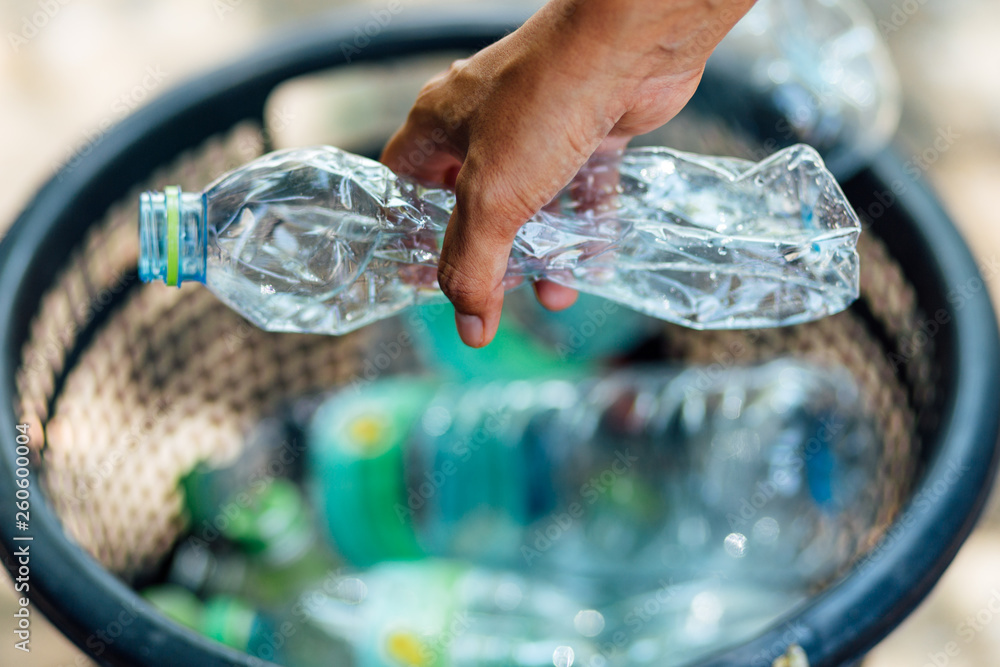뉴스&스피킹(영자신문)
하루 10분이면 영어에 대한 두려움을 극복하고 누구나 유창하게 영어를 구사하실 수 있습니다.
-
 Study Finds Small Plastic Pieces in Bottled Water The average liter of bottled water has nearly a quarter million invisible pieces of very small plastic known as nanoplastics, a recent study says.
Study Finds Small Plastic Pieces in Bottled Water The average liter of bottled water has nearly a quarter million invisible pieces of very small plastic known as nanoplastics, a recent study says.
Researchers found the nanoplastics with a microscope using dual lasers.
Scientists long figured there were lots of these very small plastic pieces. But until researchers at Columbia and Rutgers universities did their calculations, they never knew how many or what kind.
Looking at five samples each of three common bottled water brands, researchers found particle levels ranged from 110,000 to 400,000 per liter. The average was around 240,000, the study said. The research appeared recently in the publication Proceedings of the National Academy of Sciences.
Nanoparticles are particles that are less than a micron in size. In comparison, a human hair is about 83 microns wide.
Previous studies have looked at slightly bigger microplastics that range from 5 millimeters, which could be seen by human eyes, to one micron. About 10 to 100 times more nanoplastics than microplastics were discovered in bottled water, the study found.
Much of the plastic seems to be coming from the bottle and the filtration system to clean the water itself, said the study’s lead writer Naixin Qian of Columbia University.
She would not name the three brands because researchers want more samples and they want to study more brands. Still, she said they were common and bought at a Walmart, a popular store in the U.S.
Researchers still cannot answer the big question: Are those nanoplastic pieces harmful to health?
“That’s currently under review. We don’t know if it’s dangerous or how dangerous,” said study co-writer Phoebe Stapleton of Rutgers University. “We do know that they are getting into the tissues (of mammals, including people) … and the current research is looking at what they’re doing in the cells.”
The International Bottled Water Association said in a statement: “There currently is both a lack of standardized (measuring) methods and no scientific” agreement on the possible health effects of nano- and microplastic particles. The statement added, “Therefore, media reports about these particles in drinking water do nothing more than unnecessarily scare consumers.”
The American Chemistry Council, which represents plastics manufacturers, declined to immediately comment.
The Associated Press spoke with four co-writers of the study. All of them said they would cut back on their bottled water use.
Columbia chemist Wei Min said he has reduced his bottled water use by half. Stapleton said she now depends more on filtered water at home in New Jersey.
But study co-author Beizhan Yan, a Columbia environmental chemist who increased his tap water usage, pointed out that filters themselves can be a problem by introducing plastics.
“There’s just no win,” Stapleton said.
Outside experts, who praised the study, agreed that there is a general unease about the risks of fine plastic particles. Still, it is too early to say anything certain about the risks.
“The danger of the plastics themselves is still an unanswered question. For me, the additives are the most concerning,” said Jason Somarelli of Duke University in North Carolina. Somarelli was not part of the research. He added, “We and others have shown that these nanoplastics can be internalized into cells, and we know that nanoplastics carry all kinds of chemical additives that could cause cell stress, DNA damage and change metabolism or cell function.”
Somarelli said his own research has found more than 100 “known cancer-causing chemicals in these plastics.”
Dual laser microscope
About 15 years ago, Min invented dual laser microscope technology that identifies specific compounds by their chemical properties and how they respond when exposed to lasers. Yan and Qian talked to him about using that technique to find and identify plastics that had been too small for researchers using established methods.
Kara Lavender Law of the Sea Education Association said “the work can be an important advance in the detection of nanoplastics,” but she said she’d like to see other chemists use the technique and get the same results.
Yan said he is starting to study water supplies in the U.S. cities of Boston, St. Louis, Los Angeles and elsewhere to see how much plastics are in their tap water. Previous studies looking for microplastics and some early tests suggest there may be less nanoplastic in tap water than in bottled water.
Even with unknowns about human health, Yan said he does have one suggestion: Use reusable bottles instead of single-use plastics.
I’m John Russell.
And I'm Ashley Thompson.View -
 Argentina’s Inflation Rises 211.4 Percent In his inauguration speech, Milei announced a painful plan meant to avoid extremely high inflation. He warned that the measures would at first have harmful effects “… on the level of activity, employment, real wages, and the number of poor and indigent people.”
Argentina’s Inflation Rises 211.4 Percent In his inauguration speech, Milei announced a painful plan meant to avoid extremely high inflation. He warned that the measures would at first have harmful effects “… on the level of activity, employment, real wages, and the number of poor and indigent people.”
It is estimated that around 40 percent of the country’s population lives in poverty.
Food and non-alcoholic drinks, which have the largest effect on the yearly inflation rate, saw an average increase of 29.7 percent in December, INDEC found. Other products used by the general population rose by around 30 percent, while medications had an average increase of 40 percent.
Graciela Bravo, a 65-year-old retiree, said, "Nothing is cheap." She told the Reuters news agency that she used to buy potatoes by the kilo. "Now I get three potatoes or four potatoes so they don't spoil,” she said.
Alejandro Grossi, a 49-year-old lawyer, said he was used to rising prices after years of inflation. He said, "It's like we're used to it, it's already something so natural here: inflation and changing prices."
I’m Gregory Stachel.View -
 NASA Delays Moon Missions Over Technical, Safety Problems The American space agency NASA has postponed two moon missions that are facing development and safety issues.
NASA Delays Moon Missions Over Technical, Safety Problems The American space agency NASA has postponed two moon missions that are facing development and safety issues.
NASA’s program to return astronauts to the moon for the first time since NASA’s Apollo 17 mission in 1972 is called Artemis. The agency split the program into three parts.
In 2022, Artemis I sent NASA’s Orion spacecraft on a trip around the moon without a crew. The agency’s huge Space Launch System (SLS) rocket carried Orion into space. The spacecraft traveled more than 400,000 kilometers from Earth and completed a close fly-by of the moon. NASA officials declared Artemis I a big success.
The second planned trip, Artemis II, was set for late 2024. The goal was to send Orion on the same path Artemis I took, but with four astronauts. NASA announced last week it had set a new September 2025 target for the launch of Artemis II.
The third mission, Artemis III, will attempt to land astronauts on the surface of the moon. NASA says the crew is expected to include “the first woman and the first person of color.” Artemis III was planned for 2025 but has now been pushed back to September 2026.
NASA Administrator Bill Nelson said the postponements were necessary in order to give the agency time to deal with several ongoing problems affecting the Artemis program. “Safety is our top priority," Nelson said. He added that the delays will “give Artemis teams more time to work through the challenges.”
NASA’s announcement about the delays came shortly after the successful launch of a private American company’s spacecraft that aimed to land on the lunar surface.
That spacecraft, called Peregrine, is a moon lander built by Pennsylvania-based Astrobotic Technology. It launched January 8 aboard a Vulcan Centaur rocket built by America’s United Launch Alliance (ULA).
Immediately after Peregrine’s launch, Astrobotic officials praised the mission as the first step to becoming the first private space vehicle to land on the moon. But shortly after the launch, a fuel leak was discovered.
Astrobotic has said the spacecraft would continue on its mission while leaking fuel but faces ongoing power and propulsion problems. The company aims to keep the lander going as long as possible and to collect data from its instruments. But officials from Astrobotic have said Peregrine is no longer expected to land on the moon.
Peregrine is part of NASA's Commercial Lunar Payload Services (CLPS) program. It aims to hand over the nation’s major missions to private companies in an effort to operate at reduced costs.
Peregrine and other planned missions in the CLPS program aim to land on the moon to support future Artemis activities. Another program member, Texas-based Intuitive Machines, plans to launch its Nova-C lander to the moon next month.
Astrobotic has said it also plans to send another lander, called Griffin, to the moon’s south pole in late 2024. It will be carrying an exploring robot, or rover, called VIPER. VIPER is designed to search for water sources on the moon.
NASA’s moon-landing effort has been delayed repeatedly over the past 10 years, adding billions of dollars to the cost, The Associated Press reports. Government estimates have predicted total program costs will reach $93 billion through 2025.
Reuters news agency reported NASA discovered problems with the Orion spacecraft’s batteries during vibration tests. Engineers have said the batteries will likely need to be replaced.
Catherine Koerner is a leader at NASA’s Exploration Systems Development Mission Directorate in Washington. She said in a statement all technical issues will be fully investigated with safety as NASA’s top goal. “We are letting the hardware talk to us so that crew safety drives our decision-making.”
Koerner added, “We will use the Artemis II flight test, and each flight that follows, to reduce risk for future moon missions.” Even with the delays and ongoing concerns, she said NASA is “closer than ever to establishing sustained exploration of Earth’s nearest neighbor under Artemis.”
I’m Bryan Lynn.View -
 Japan's Moon Vehicle Lands Successfully but Is Losing Power Japan on Friday became the fifth country to land a spacecraft on the moon. The mission’s aim was to carry out an exact landing and to collect information about the Earth’s only natural satellite.
Japan's Moon Vehicle Lands Successfully but Is Losing Power Japan on Friday became the fifth country to land a spacecraft on the moon. The mission’s aim was to carry out an exact landing and to collect information about the Earth’s only natural satellite.
Japan’s space agency, known as JAXA, said its Smart Lander for Investigating the Moon, called SLIM, landed on the moon’s surface at 15:20 UTC Friday. It then re-established communication with Earth. But its solar panels were not able to create electricity, possibly because they are pointed in the wrong direction.
"SLIM is now operating only on its battery, and we are prioritizing the transfer of its data to Earth," Hitoshi Kuninaka, the head of JAXA's research center, told reporters.
A battery is a device that stores electricity.
Space officials are attempting to save power by turning off equipment like its heaters. But SLIM’s battery only lasts “a few hours.”
JAXA hopes a change in the sun’s position in the sky will cause the panels to receive sunlight to power the vehicle, Kuninaka said. He added that it takes 30 days for the direction of sunlight to change on the moon.
SLIM attempted to land within 100 meters of its target, instead of within several kilometers. JAXA said this exact landing technology will become a powerful tool in the search for oxygen, fuel, and water on the moon.
Landings on the moon
Japan aims to play a bigger part in space, partnering with ally the United States. Japan is also home to several private space companies. JAXA aims to send an astronaut to the moon as part of NASA’s Artemis program in the next few years.
But the Japanese space agency has recently faced several setbacks in rocket development. They include the launch failure in March of its new H3 rocket which is meant to compete with rockets made by private companies like SpaceX.
The failure caused delays in Japan’s space missions, including SLIM and joint moon exploration with India. India made a historic landing on the moon’s most southern point with its Chandrayaan-3 probe.
JAXA has twice landed on asteroids, but the moon’s gravity makes landing on it more difficult, its scientists said. Three missions to the moon by Japanese company ispace, Russia’s space agency, and American company Astrobotic have failed in the past year.
Only four nations, the former Soviet Union, the United States, China and India, have successfully carried out a soft landing on the moon. No private company has been able to do it.
SLIM measures 2.4 meters by 2.7 meters—about the size of a car. It has two main engines, along with 12 smaller thrusters. It also includes equipment like solar cells, radar, and cameras.
SLIM weighed 700 kilograms at launch. That is less than half the weight of India’s Chandrayaan-3.
As the probe got closer to the surface, it was designed to compare its camera’s images with satellite photos of the moon. JAXA has said this method permits an exact landing.
On landing, reports say SLIM successfully released two small robot probes. One moves by taking small jumps, or hops. The other is an even smaller baseball-sized wheeled vehicle. Sony Group and toy company Tomy, and several Japanese universities developed the robots.
SLIM was launched on Japan’s H-IIA rocket in September. It has taken a fuel-saving four-month trip to the moon.
I’m Gregory Stachel.View -
 Anti-poverty Group: World Could See First Trillionaire within 10 Years Oxfam, an organization that works to end poverty, has predicted the world will likely see its first trillionaire within 10 years.
Anti-poverty Group: World Could See First Trillionaire within 10 Years Oxfam, an organization that works to end poverty, has predicted the world will likely see its first trillionaire within 10 years.
The prediction comes as the world’s wealthiest nations gather in Davos, Switzerland for both public and private meetings. Leaders from more than 60 nations will be discussing issues including ongoing world conflicts, the effects of artificial intelligence (AI) on businesses, climate change and the future of democracy.
Oxfam often points out the huge wealth differences between the world’s richest and poorest. It noted these differences had become “supercharged” since the COVID-19 pandemic.
Oxfam noted the five wealthiest people in the world had seen their worth increase by over 100 percent since 2020. They include Elon Musk of Tesla, Bernard Arnault of the luxury goods company LVMH, Amazon’s Jeff Bezos, Larry Ellison of Oracle and Berkshire Hathaway chief Warren Buffett.
Amitabh Behar is Oxfam’s current director. Behar said the world is entering a “decade of division.” The group’s leader noted that while the five wealthiest people had doubled their worth since 2020, “almost 5 billion people have become poorer.”
Behar predicted that in about 10 years, the world will have its first trillionaire. A trillionaire would be a person worth 1,000 billion dollars. Behar noted that the fight against poverty would take much longer, at least 200 years.
The organization said it is possible the person who becomes the first trillionaire is not currently known, meaning the individual may not be one of the five wealthiest people today.
American John D. Rockefeller, of Standard Oil fame, is widely considered to have become the world’s first billionaire in 1916.
Currently, Musk is the richest man on the planet, with a personal worth of just under $250 billion, Oxfam says. The organization makes its estimates based on data from the publication Forbes.
While many of the rich got richer in the last four years, Oxfam says about 5 billion people became poorer during that time. This is because many poor nations could not provide financial support to their people when economies slowed down due to COVID-19.
In addition, high inflation since Russia’s 2022 invasion of Ukraine has increased the cost of food and other basic supplies.
While the meeting in Davos only lasts until Friday, Oxfam said it will continue talking about wealth inequalities. This year’s Group of 20 meeting of the world’s most developed countries will be held this July in Brazil. Max Lawson is head of Oxfam’s inequality policy department. He said that meeting will also be a good time to raise awareness about the problem of world poverty.
Oxfam is calling on Brazilian President Luiz Inacio Lula da Silva to include poverty problems in the developing world in G20 discussions. The group would like him to bring up issues such as a permanent wealth tax in every nation, stronger taxation of large companies and a campaign against tax avoidance.
Oxfam said it looked at the world’s wealthiest people based on rankings from Forbes in November 2023. For the poorest people, Oxfam looked at numbers from the UBS Global Wealth Report 2023 and the Credit Suisse Global Wealth Databook of 2019.
I’m Dan Friedell.View

